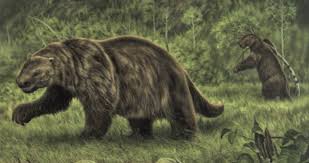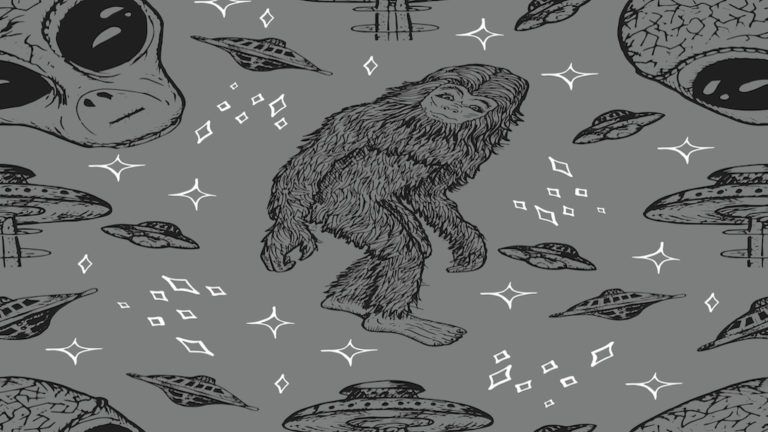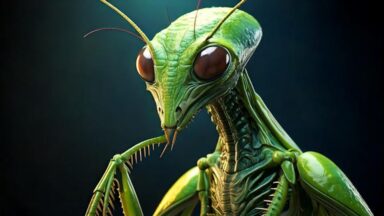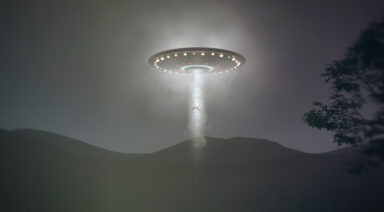Does the Legendary Mapinguari of South America Exist?

All over the world there are tales of legendary creatures — sometimes magical and mischievous, such as fairies, sometimes ferocious and deadly, like yowies. Within these creatures’ respective cultures are numerous people who not only believe in them, but are positive that they’ve seen them firsthand.
Deep in the Amazonian rainforest lurks one of these creatures — the Mapinguari, which is often referred to as a “sloth monster.” It’s a popular figure within Brazilian culture, and tales of how fearsome it is have persisted into modern day, where reports of sightings continue to mount, as does evidence of the destruction left in the Mapinguari’s wake.
According to most legends, the sloth monster began its life thousands of years ago, as an Amazonian shaman who stumbled upon the secret to immortality. Because of his findings, however, he became smug, an attribute that angered the gods. As a punishment for his hubris, they transformed the shaman into a giant, sloth-like creature and left it to wander the forest for eternity.
Description: The Sloth Monster
When people think of sloths, they generally think of sweet, peaceful, slow-moving creatures that delight in hanging from branches and delicately eat flowers. It’s hard to imagine a fearsome sloth.
But the mapinguari is giant, exceeding seven feet in length when it stands on its hind legs, which it apparently does, on occasion, though it is said to travel on all fours. And when it assumes this posture, the unfortunate person beholding it can bear witness to its second mouth, located on its belly.
The description grows more bizarre, depending on who gives it. From its backward-facing feet protrude sharp claws. Some say it possesses only one eye, which is centered upon its head, and that its thick skin is akin to that of a crocodile — so tough that arrows would bounce off of it.
Unlike the common sloth, mapinguaris are reputedly greedy carnivores that will consume any living thing in its path — including entire herds of cattle. Regardless, no reports have been made of any human ever being eaten by the creature. But that may be because of the mapinguari’s stench, a foul-smelling warning said to cover a large radius and be so potent that it could render a person unconscious.
Mapinguari Sightings
The Amazonian rainforest contains numerous indigenous tribes, many of whom have not had contact with one another, and they all believe in the mapinguari, have their own names for it (often translated as “the roaring animal” or “the fetid beast”), and have personal accounts of it. One member of the Karitiana tribe, Geovaldo Karitiana, recounted his story to the New York Times, explaining that he was hunting in the forest near what his tribe refers to as “the cave of the mapinguari.” He’s quoted as saying, “‘It was coming toward the village and was making a big noise…It stopped when it got near me, and that’s when the bad smell made me dizzy and tired. I fainted, and when I came to, the mapinguari was gone.”

Geovaldo’s father explained that his son showed him the path of destruction left in the sloth monster’s midst, that the creature’s trail was obvious from the number of felled trees and vines that were trampled and strewn about.
David Oren, a well-known scientist and skeptic-turned-believer, has been pursuing the beast for years. In his quest, he has collected stories from more than 50 other eye witnesses who have come forward with their stories. Discover Magazine shares the story of Mário Pereira de Souza, one of the witnesses who met with Oren: “His encounter with a mapinguari took place in 1975, when he was working as a hunter for a mining camp along the Jamauchim River, which flows into the Tapajós, just south of Itaituba.
De Souza said the long-haired creature screamed and came staggering toward him on its hind legs, swaying and unsteady. But what he remembers most, and the reason he claims he has never set foot in the rain forest again, was the stench. ‘The horrible smell entered into me and made me dizzy,’ he says. ‘I was not right for two months.’”
Ground Sloth Facts — Evidence of Existence
Despite their best efforts, numerous scientists have had a rough time disproving the existence of this giant ground sloth. Even though its description seems so far-fetched, many researchers have reason to believe the creature is a relative of a certain species of giant ground sloth called the Megatherium.
The Megatherium is believed to have gone extinct sometime during the 16th century and is described as walking on four legs, but capable of standing on its hind legs, measuring at least nine feet in length. It’s said to have had huge claws that appeared to be backward to dig up vegetation. There’s even evidence of massive scent glands on its stomach that may have been mistaken for a second mouth. Perhaps it would explain the creature’s token horrific stench. Unlike the mapinguari, the Megatherium was said to be a vegetarian.
The world is replete with strange, wondrous, and fear-provoking creatures, and the Amazon is no exception. Of course, there is no telling what the mapinguari actually is, but like so many of the wild and elusive monsters of legend, its unfortunate reputation — and stench — precedes it. Jungle explorers would be best served to retreat at the first malodorous hint, and taking the advice of tribal leader Domingos Parintintin who said that “…the best thing to do if you see one is climb a tree and hide.” And, you know, take a few photographs while you’re up there.
Environmental correspondent Ian Johnston reported that “a new species is being discovered in the Amazon every two days, from fire-tailed titi monkeys and yellow-moustached lizards to pink river dolphins and honeycomb-patterned stingrays. And “the astonishing rate of new finds showed scientists had still only scratched the surface of all the ‘incredible species’ that live there.” Perhaps the mapinguari is next on the list, if the Amazon survives long enough to reveal its secrets.
UFOs and Bigfoot; Evidence of an Inter-Dimensional Connection

John Keel, the prominent ufologist and paranormal researcher, famous for the Mothman Prophecies, once proposed the idea that there are “window areas” throughout the world, connecting our reality with parallel dimensions. These areas, Keel imagined, may help elucidate some unexplained reports of entities that are too fleeting or confusing to later detail or prove. With the increasing plausibility of the multiverse theory and infinite neighboring universes, maybe we should be asking ourselves; are UFOs and Bigfoot interdimensional travelers, and could there be a connection between the two?
Interdimensional Bigfoot Theories
For hundreds of years, people worldwide have reported encounters with monsters, fairies, demons, and cryptids. To this day those experiences persist, while many of these same entities have also been encountered through the use of psychedelics.
Now, it would be easy to say these are simply archetypal figures; beings our collective consciousness conjures in our minds with anthropomorphic features based on fears or subliminal functions of our psyche. Or we could entertain the ostensibly bizarre possibility that these are entities from another dimension operating on higher realms of existence.
Keel referred to these entities as ultra-terrestrials; beings capable of crossing dimensions at will, often acting as “cosmic pranksters.” Daniel Pinchbeck says he experienced prankster entities from a psychedelic realm cross into the real world after encountering them during and in the subsequent weeks following a psychedelic trip.
When it comes to Bigfoot, Sasquatch, the Yeti, or whatever you want to call them, there is often a playfulness and/or spookiness described in their actions. Tree knocking or eerie screams alert us to their presence until we get close enough where they might offer a glimpse, before vanishing seemingly into thin air.
Their appearance could be considered another form of prank, embodying a primitive, ape-like creature that exudes a noxious odor. Yet, they’re able to evade contact with us despite thousands of reported sightings over hundreds of years. Is Sasquatch cosmically trolling us?
An intriguing account tying UFO’s and Bigfoot together comes from an 1888 meeting between cattle ranchers and a group of Native Americans in Northern California. The natives described three “crazy bears” that descended from the sky in a small moon, leaving them in the woods before taking off.
In another instance, in Cincinnati, Ohio in 1973, a woman named Reafa Heitfield and her daughter were awakened in the middle of the night to a beam of light extending down from a bulbous umbrella shape in the sky. Tracking the light to where it landed in the nearby woods, the two noticed a grayish, simian creature wandering toward the beam. Before they knew it, both the ape and the craft disappeared.
Though these stories may be apocryphal in nature, it’s reported that at least 20 percent of Bigfoot sightings coincide with UFO events.
Jack Cary, a cryptozoologist who has studied Bigfoot for decades, says he believes it’s alternatively plausible that Bigfoot is being abducted by UFOs in much the same way humans are, to study its DNA and physical attributes.



































